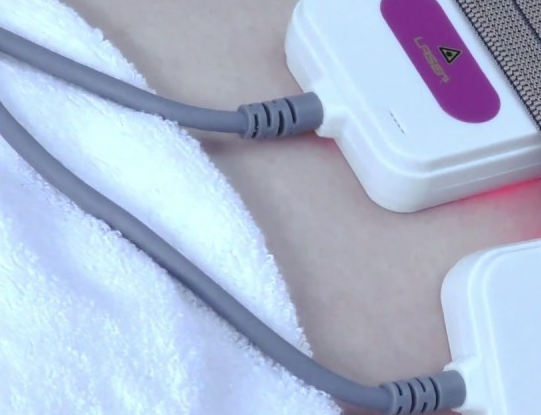Non-invasive fat reduction procedures have become very popular among people who want to get a toned and sculpted figure. Laser lipo and cavitation are two common choices in this area. Both methods guarantee to aid users in eliminating surplus fat cells without the requirement for surgery. In order to evaluate which procedure could be more ideal for you, this article compares the advantages and disadvantages of cavitation and laser lipo.
What is Cavitation?
Cavitation is a non-invasive body contouring technique that targets and destroys fat cells with the help of ultrasonic vibrations. The procedure is normally carried out with the use of a machine that generates low-frequency ultrasound waves, which cause bubbles to develop inside the fat cells. Eventually, the fat cells rupture and discharge their contents as a result of these imploding bubbles.

How Does Cavitation Work?
The targeted area is covered with the ultrasound device during a cavitation session, which is then moved in a circular manner by the practitioner. Ultrasonic waves pass through the skin and get to the fat cells underneath. The continual motion disturbs the integrity of the fat cells, resulting in the release of fatty acids and triglycerides.
Benefits of Cavitation
Non-surgical alternative to liposuction:
Cavitation provides an alternative to surgical techniques such as liposuction, which have higher risks and need longer recovery times.
Targeted fat reduction:
Using this method, it is possible to target troublesome areas with pinpoint accuracy, such as the abdomen, thighs, or love handles.
Minimal discomfort:
Cavitation is a non-invasive, painless procedure that doesn't involve any cuts or anesthetic. Most people just feel a slight warming or tingling during the session.
No downtime:
Unlike surgical procedures, cavitation requires little recovery time, allowing patients to get back to their normal routines right away.
Cavitation's limitations
Variable results:
The effectiveness of cavitation varies from person to person, and not everyone achieves the same level of fat removal.
Multiple sessions may be required:
To achieve the desired results via cavitation, significant fat loss typically requires many sessions.
Healthy lifestyle maintenance:
People are urged to maintain a good diet and frequent exercise in order to maintain the advantages of cavitation.
What is Laser Lipo?
Laser lipo, also known as laser lipolysis or laser-assisted liposuction, is another non-invasive fat reduction technique. This method uses laser radiation to liquefy and break down fat cells, which are afterwards naturally removed by the body's lymphatic system.
How Does Laser Lipo Work?
Low-level laser energy is applied to the target area during a laser lipo therapy utilizing specialized pads or paddles. The fat cells' membranes are damaged by the laser light, which causes them to rupture and release their internal contents. Afterward, the body's natural metabolic process metabolizes the liquidized fat, and it is eliminated.
Benefits of Laser Lipo
Non-surgical and minimally invasive:
With little invasiveness and lowered dangers, laser lipo provides a non-surgical substitute for conventional liposuction.
Enhanced skin tightening:
Along with reducing fat, laser lipotherapy encourages the formation of collagen, which enhances skin firmness and tightness in the treated area.
Quick recovery:
The recovery period after laser lipo is relatively brief due to the procedure's minimally invasive nature, allowing people to quickly return to their regular activities.
Limitations of Laser Lipo
Varied results:
Similar to cavitation, the effectiveness of laser lipo might vary from person to person, and it may take several sessions to get the best results.
Not appropriate for significant fat loss:
Instead of larger areas that need more involved procedures, laser lipo is typically advised for people with small to moderate pockets of fat.
Cost considerations:
Laser lipo can be a bit more expensive when compared to other non-invasive fat reduction techniques.
Cavitation vs. Laser Lipo
Numerous aspects need to be taken into account when choosing between cavitation and laser lipo. Let's compare the main features of both therapies to see which is best for you.
Effectiveness
Both cavitation and laser lipo have demonstrated promising fat removal outcomes. However, depending on factors like body composition, lifestyle, and adherence to post-treatment advice, individual outcomes may differ.
Safety
Both procedures are typically regarded as secure when carried out by qualified experts. It's vital to make sure the practitioner is experienced and qualified.
Cost
Variables including the treatment area, the number of sessions needed, and the clinic's location can all affect how much cavitation and laser lipo cost.
Time Required
Depending on the target area and the patient's response, cavitation and laser lipo treatments typically last 30 minutes to an hour per session. With breaks of a few weeks between each session, multiple sessions could be necessary to get the best outcomes.
